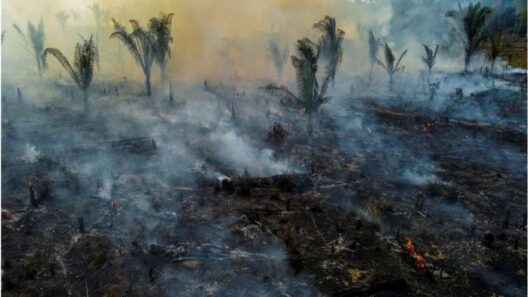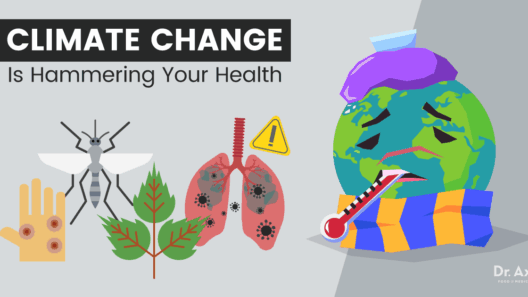In recent years, the rising prevalence of extreme weather events has beckoned public and scientific scrutiny alike. What was once viewed as an anomaly has now become an expectation, encapsulating the urgent discourse surrounding climate change. A paradigm shift in our comprehension of weather phenomena is essential—one that recognizes how climate change not only alters long-term weather patterns but also exacerbates the severity and frequency of extreme weather events.
To grasp the intricate connection between climate change and extreme weather, one must first understand the foundational principles of what constitutes “extreme weather.” While traditional weather events fall within predictable parameters—a sunny day, a light rain, or a gentle snowfall—extreme weather slips beyond these bounds. Extreme weather encompasses a spectrum of catastrophic disturbances: hurricanes, droughts, floods, and heatwaves. It is the unusual volatility and intensity of these phenomena that distinguishes them as extreme.
Climate change acts as a catalyst, amplifying these weather events through a triad of mechanisms: rising global temperatures, shifting precipitation patterns, and altered atmospheric circulation. Each of these dynamics warrants careful examination to construct a comprehensive view of how climate change is reshaping our meteorological landscape.
Firstly, the most palpable impact of climate change is the increment in global temperatures. The Intergovernmental Panel on Climate Change (IPCC) posits that average global temperatures have risen approximately 1.1 degrees Celsius since pre-industrial times. This seemingly modest increase possesses profound repercussions. Warmer air can hold more moisture, thereby intensifying rainfall during storm events. Enhanced evaporation can also lead to severe dry spells, creating a landscape ripe for drought. The dichotomy of moisture imbalance results in pronounced extremes. Thus, a warming earth can manifest both torrential downpours and parched lands, two extremes of what we typically consider weather patterns.
Next, we must examine how climate change influences precipitation patterns. Warmer global temperatures lead to increased water vapor in the atmosphere. This phenomenon not only heightens the likelihood of precipitation but also alters its distribution. Certain regions may experience unprecedented flooding, while others may sink into water scarcity. This uneven distribution correlates with a growing frequency of extreme weather, such as supercharged storms and extended droughts. For instance, powerful hurricanes, such as those that have besieged coastal America, draw energy from warm ocean water, becoming more ferocious as sea temperatures rise. The severity of wind and rain associated with modern hurricanes is strikingly augmented in the current climate scenario.
Moreover, changes in atmospheric circulation, stemming from variations in ocean temperatures and ice melt, further complicate the dynamics of extreme weather. As polar ice caps diminish and ocean currents shift, the established patterns of air movement are disrupted, leading to prolonged periods of unusual weather. The jet stream, for example, may meander unpredictably, causing instances of extreme cold or heat that linger far longer than historical norms dictated. This alteration can produce a cascade of weather anomalies, such as prolonged droughts or unseasonal snowfall, affecting ecosystems and human societies alike.
The consequences of these alterations are not trifling. Communities around the world grapple with the implications of increasing weather extremes. Agricultural productivity fluctuates erratically, putting food security at risk. Economic ramifications are far-reaching; damage to infrastructure from intense storms and flooding incurs exorbitant costs. Health outcomes deteriorate, as heatwaves persist and exacerbate vulnerable populations. The interlocking nature of these challenges paints a grim picture. Yet, this complexity is not without hope. Understanding the underlying mechanisms presents an opportunity for innovative solutions and adaptations.
One avenue lies in sustainable land management practices. By adopting climate-resilient agricultural techniques, communities can fortify their defenses against the unpredictable realities of extreme weather. Reforestation, an essential practice in mitigating climate change’s impact, plays a dual role; trees absorb carbon dioxide while also protecting soil and maintaining local rainfall patterns. Moreover, investing in renewable energy sources lessens our dependence on fossil fuels, thereby reducing greenhouse gas emissions, a primary driver of climate change.
Technological advancement stands at the forefront of addressing climate-induced challenges. Infrastructure must evolve to accommodate the new extremities of weather. Engineers are venturing into resilient design, constructing buildings and roads that can withstand floods and high winds. Predictive modeling utilizing artificial intelligence can provide invaluable insights, enhancing our preparedness for extreme weather events and enabling timely evacuations when necessary.
Education and community engagement play critical roles in fostering a culture of resilience and adaptability. By raising awareness regarding climate change and its effects on weather, individuals can become proactive stewards of their environment. This includes grassroots initiatives aimed at fostering local ecosystems, which can help mitigate temperature extremes and enhance community well-being. Collaboration will be fundamental—both within communities and across nations—in the quest for solutions that address not only symptoms but also root causes.
In conclusion, the nexus between climate change and extreme weather events is underscored by a continuous feedback loop that threatens the intricate balance of our environment. Embracing a new perspective on weather phenomena invites a proactive stance on the myriad of challenges we face. It is within this recognition that we find the impetus for collaborative solutions—a united front in combating the growing tide of ecological disruption. By advocating for sustainable practices, leveraging technology, and promoting educational initiatives, we can weather this storm together and emerge more resilient in the face of future challenges.





